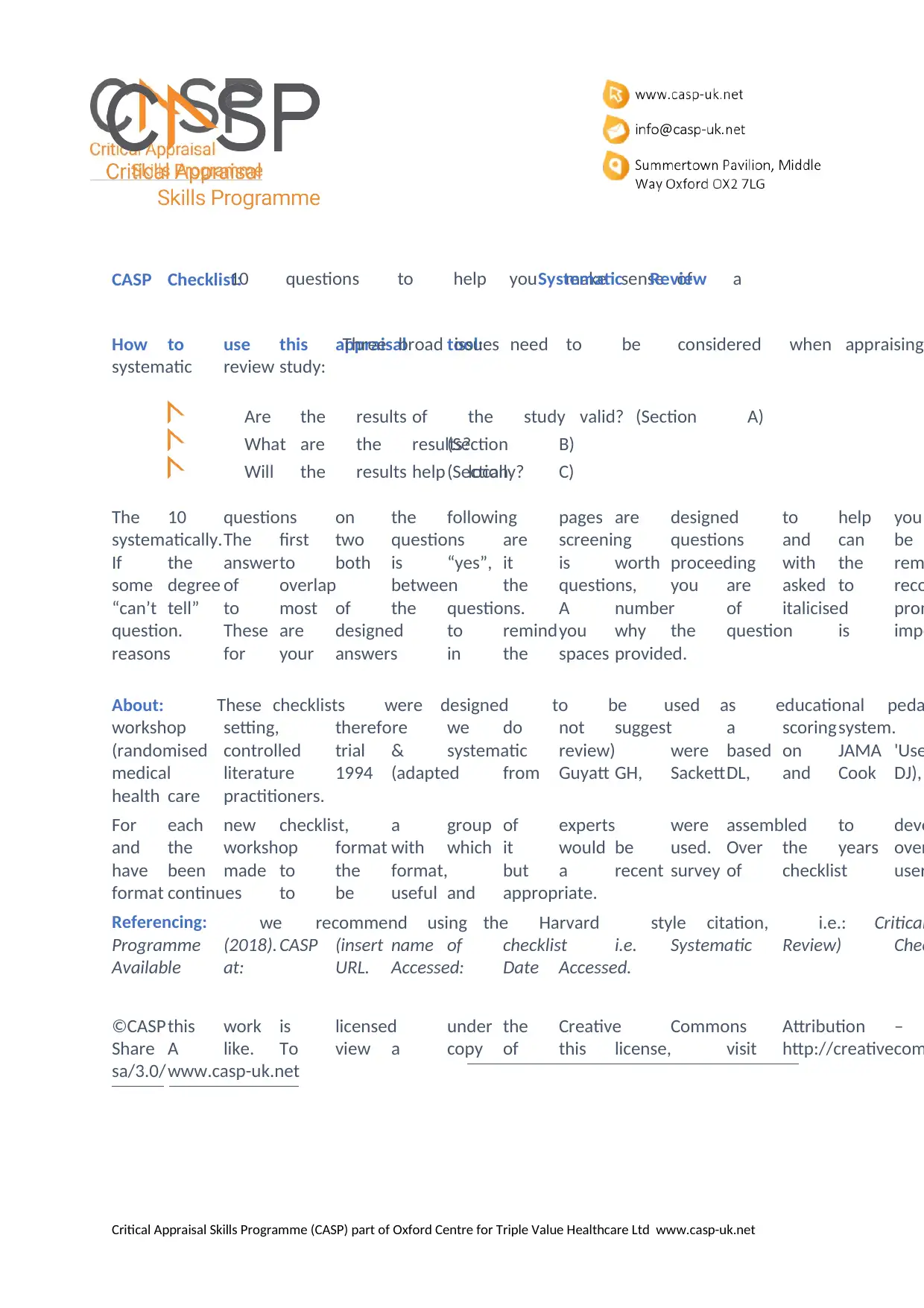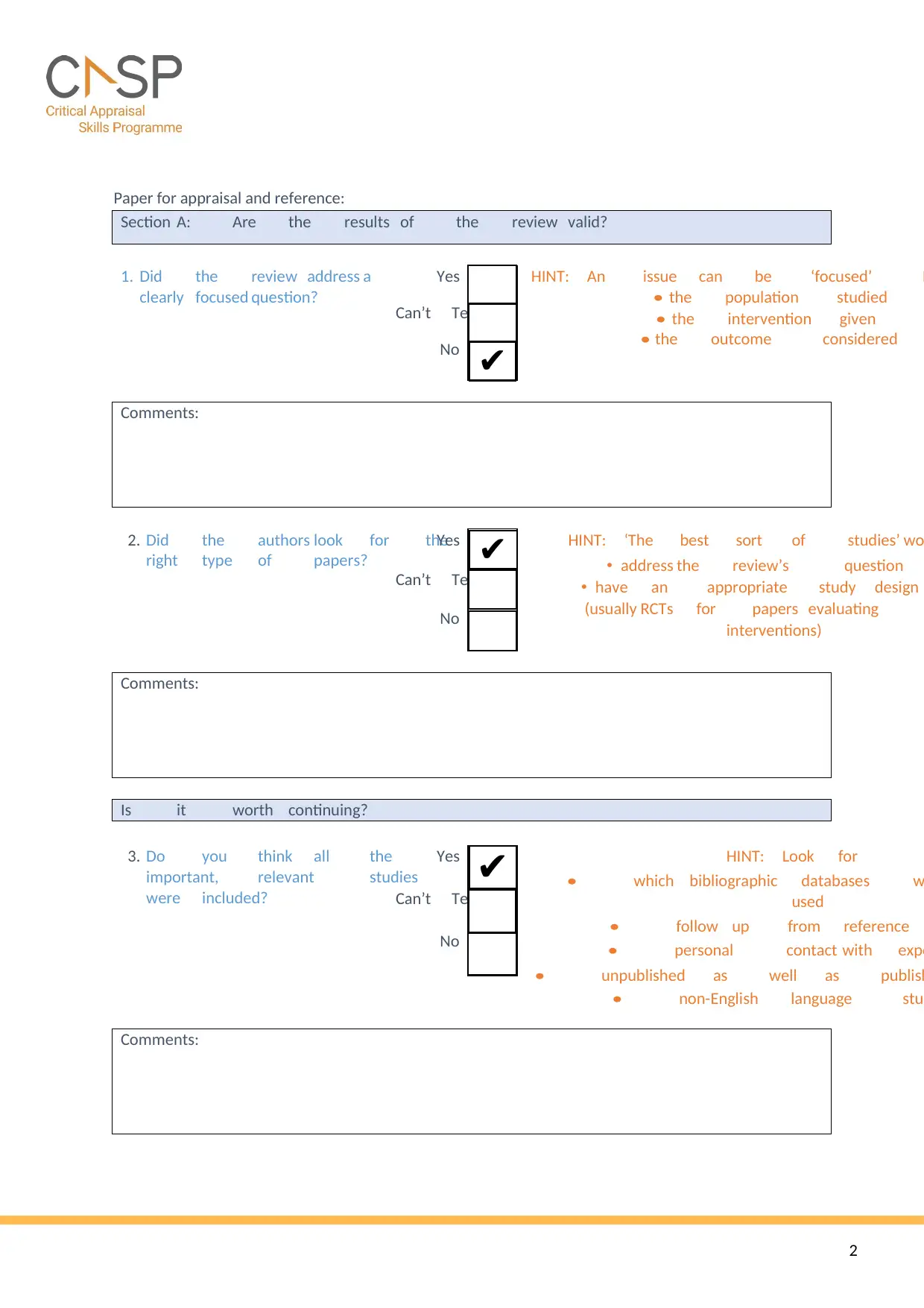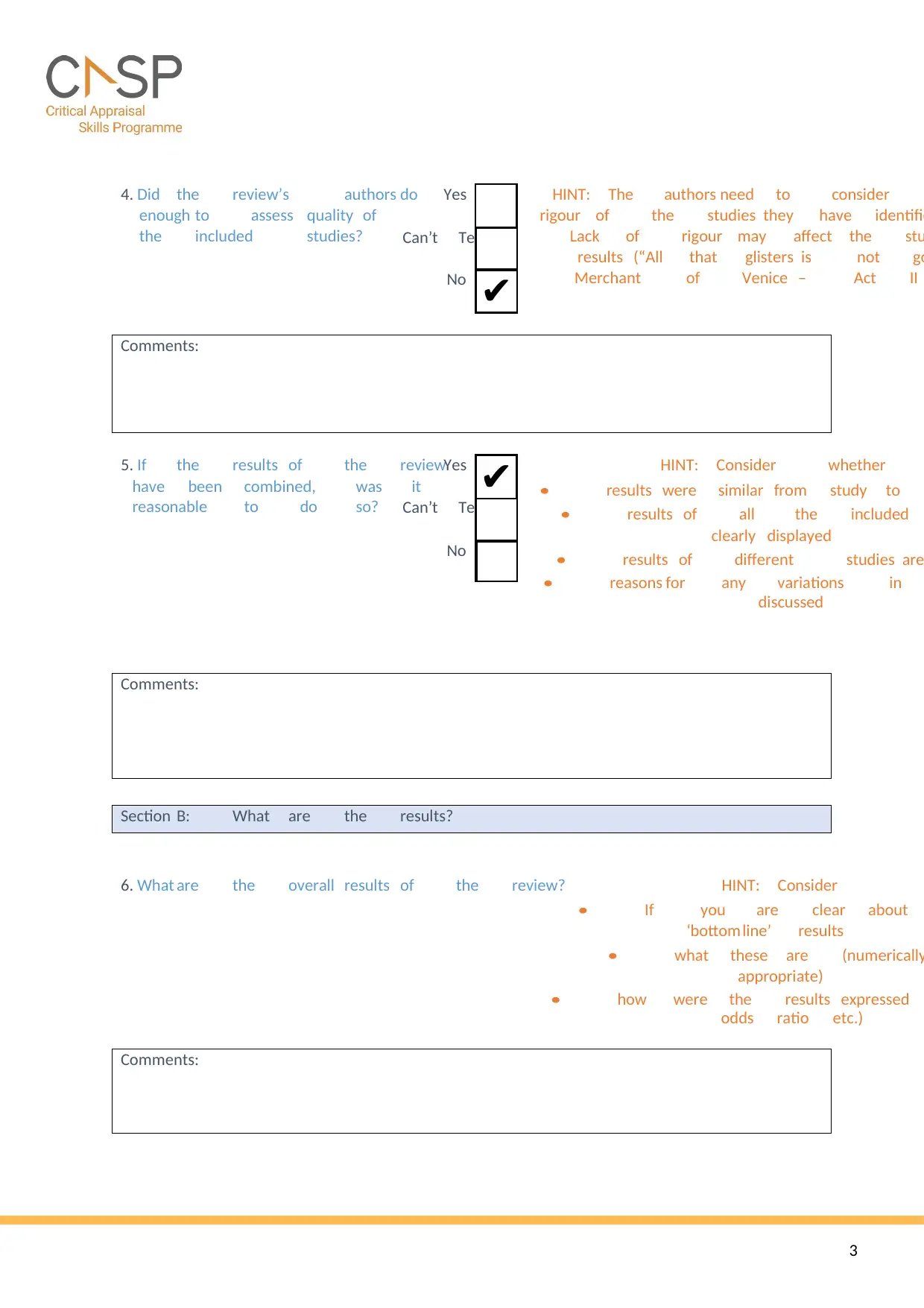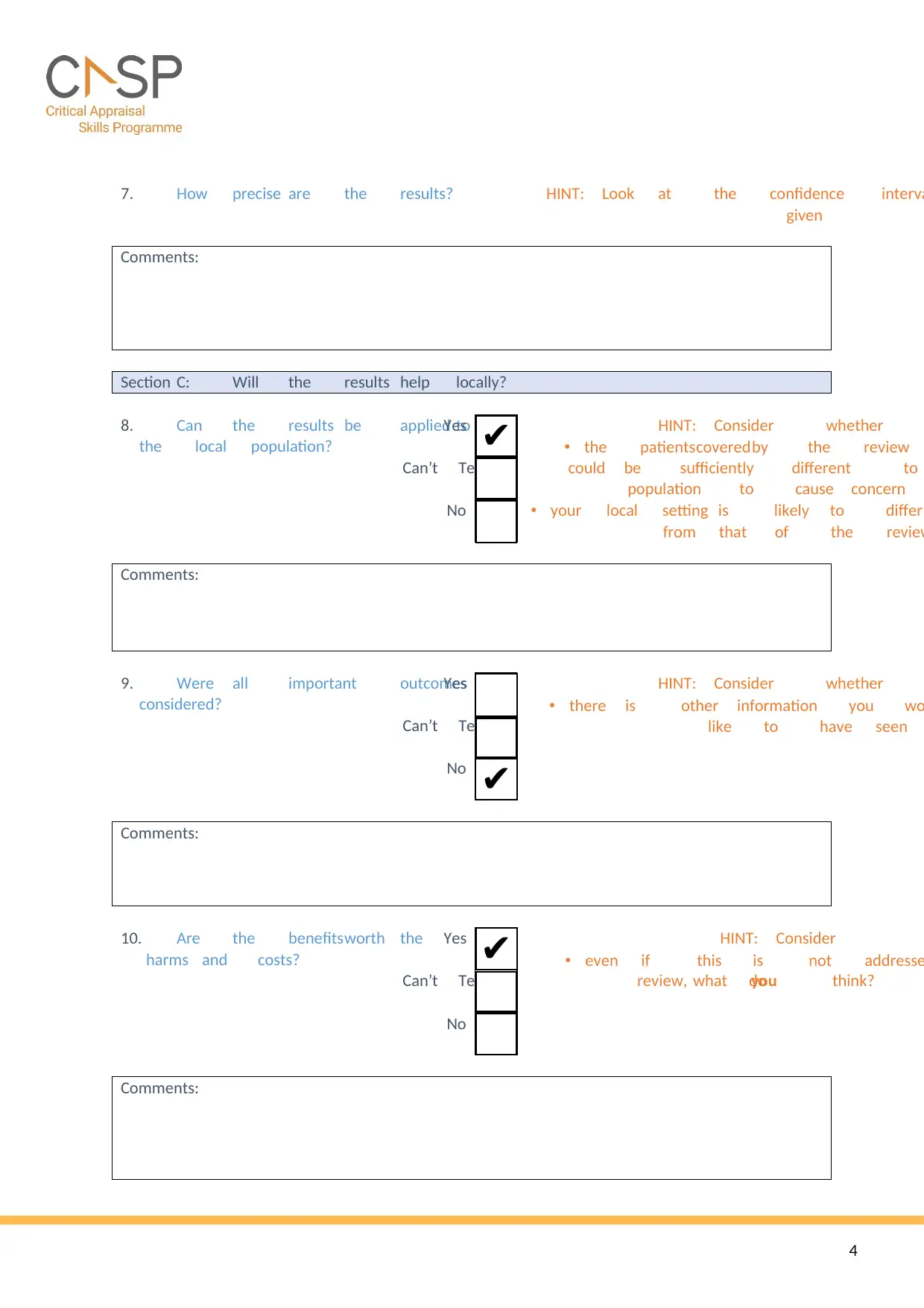Applying the CASP Checklist: Evaluating Systematic Review Validity
VerifiedAdded on 2023/04/20
|4
|943
|478
Practical Assignment
AI Summary
This assignment demonstrates the application of the Critical Appraisal Skills Programme (CASP) checklist to a systematic review. It addresses key aspects of the review's validity, results, and applicability to local contexts. The checklist guides the assessment of whether the review addresses a focused question, includes relevant studies, adequately assesses the quality of included studies, and appropriately combines results. Furthermore, it examines the precision of the results, their applicability to the local population, consideration of important outcomes, and the balance between benefits, harms, and costs. The completed checklist provides a structured framework for critically evaluating the systematic review and determining its usefulness in informing healthcare decisions.
1 out of 4










![[object Object]](/_next/static/media/star-bottom.7253800d.svg)